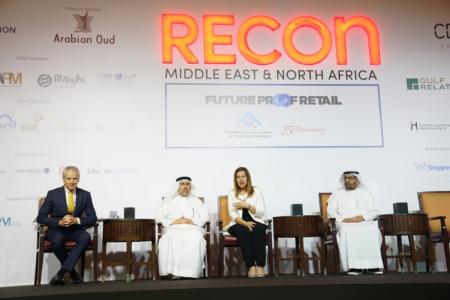UAE-based sustainability expert Farnek has launched its latest environmental benchmark survey for shopping malls, not only in Dubai and the UAE, but right across the GCC countries. The objective is to identify potential opportunities for saving energy, water and waste, compared with similar retail centres in the region.
The announcement was made at the Recon conference, organised by the Middle East Council of Shopping Centres (MECSC) and currently being held at the Ritz Carlton Hotel, DIFC in Dubai. The event which brings together shopping centre industry professionals, architects and design companies, presented Farnek with an ideal platform to launch its latest survey.
“Registering for our latest survey has been extended not only to include the UAE but also the wider GCC. All types of retail centres and malls will be included, comparing 2017 utility data with the previous year. So far, we have registered interest from close to 30 malls and our target is to enrol in excess of 50, by the end of January 2019. The trends report should then be ready for publication by the end of March,” said Sandrine Le Biavant, Director of Consultancy at Farnek.
“Data entry is free, if it is clean and facilities will receive their dedicated report and have their results included in the overall benchmark. Further support and encouragement will be provided by our in-house team of consultants,” she said.
An integral component of that support is Retail Optimizer (www.retail-optimizer.com) a framework, developed specifically for the retail sector by Farnek. The framework helps with the analysis on energy, water and waste performance, providing malls with clear KPIs that lead to a more sustainable decision-making process, performance evaluation and associated potential cost savings.
The first of its kind in the Middle East, the award-winning mall benchmarking project, which is endorsed by the Dubai Supreme Council of Energy, was designed to evaluate the energy, water and waste performance, against similar retail properties in Dubai.
“When we launched our original benchmarking survey, last year, no comparable figures were available, so malls had little idea whether their energy, waste or water consumption levels were good, bad or indifferent. Now we have a median figure so that individual malls can actually rate their own performance more accurately,” commented Markus Oberlin, CEO, Farnek.
Commenting on the significance of Farnek’s environmental survey, Faisal Al Rashid, Director, Demand Side Management at the Dubai Supreme Council of Energy, said: “We consider that sharing such data through benchmarking can drive the market to distinguish and reward energy efficiency, while continually enhancing the demand for high-performing and efficient buildings.”
For this latest survey, participating malls will be organised into four categories; super regional malls with a gross leasing area (GLA) of over 90,000 sqm; regional malls between 30,000 – 90,000sqm; community malls with 10,000 to 30,000sqm and neighbourhood malls with a GLA between 3,000 and 10,000sqm.
“This will then provide us with even more qualified benchmarking figures and it will be interesting to compare the readings of small neighbourhood malls with super regional ones, to determine the variance in performance and how economies of scale come into play,” said Le Biavant.
“We have set ourselves a number of clear objectives. First of all we want to increase the number of participants, to improve our data wealth and further define our statistics. Secondly, to help malls reduce their operational costs, especially where water, energy and waste is concerned and finally, in partnership with all of their stakeholders, to become more environmentally-conscious,” she added
Seven shopping malls in Dubai took part in the first project by submitting data about their consumption figures and general characteristics of their buildings. Other variables had to be taken into consideration, for example, amount of outdoor space, air conditioning by type and distribution, and the percentage of leasable and common area, which varied between 15% and 56%.
The key findings revealed that on average, the shopping malls surveyed use 511 kWh per square metre, per annum, consume 10.86 litres of water and generate 520 grammes of waste per visitor.
A low performing mall uses almost twice as much energy as a better performing mall and a poor waste performing shopping centre generates over four times as much waste as the best performing mall. There were also significant variances in water consumption.
“Since the last survey, we have received invaluable comments from the participating malls about the action they have taken to improve and how this has increased the pace of promoting sustainable best practice throughout their organisations,” said Le Biavant.
For more information log on to www.retail-optimizer.com



